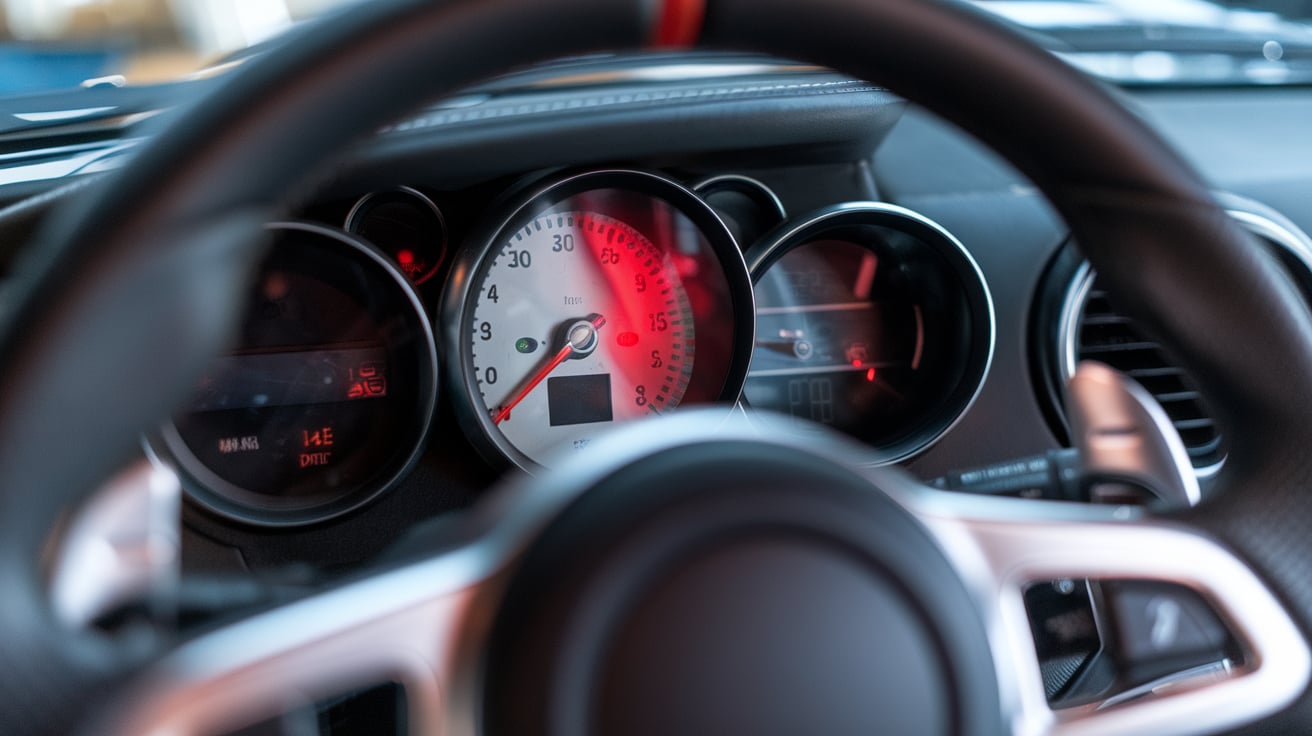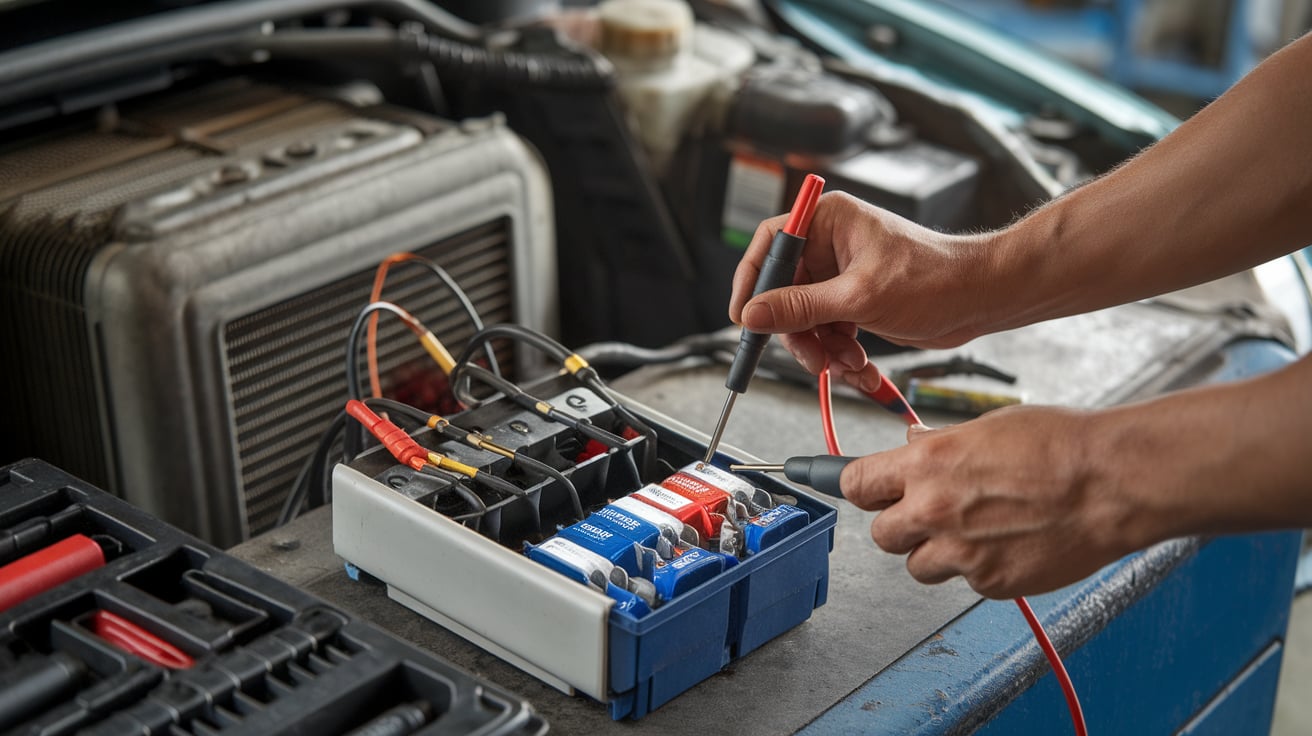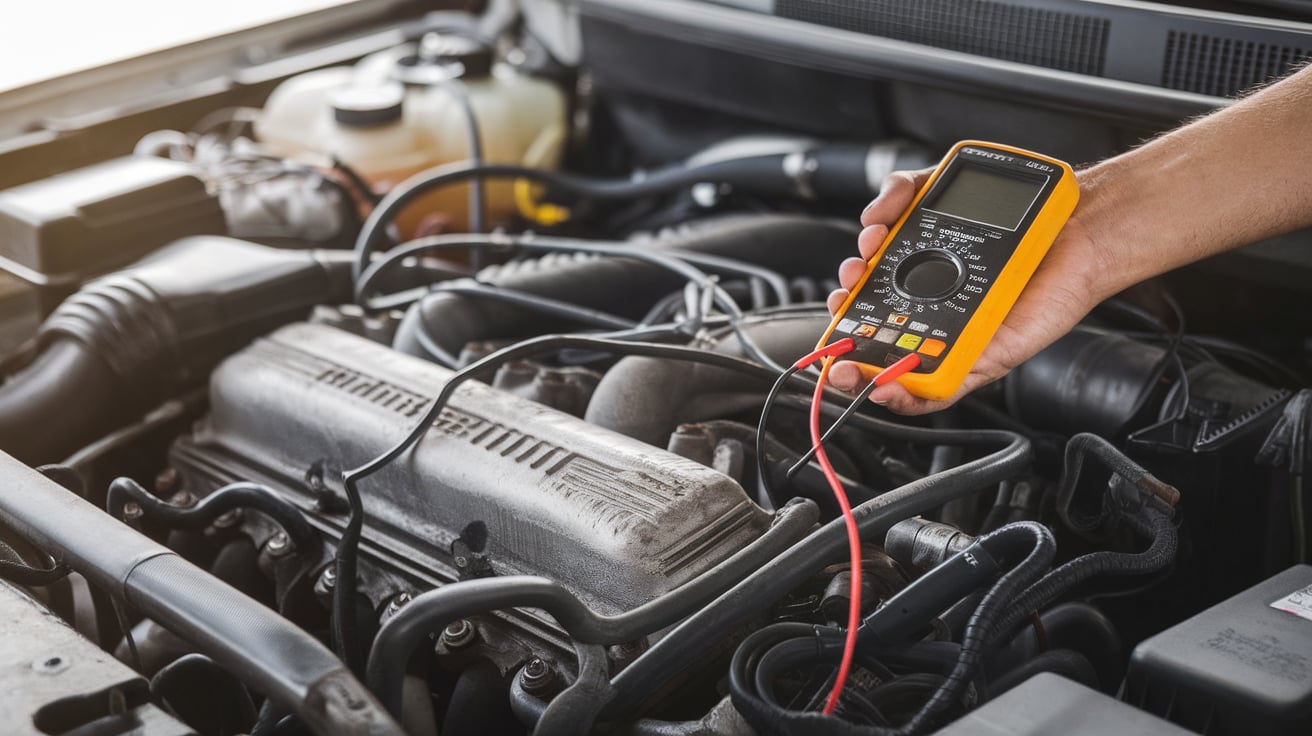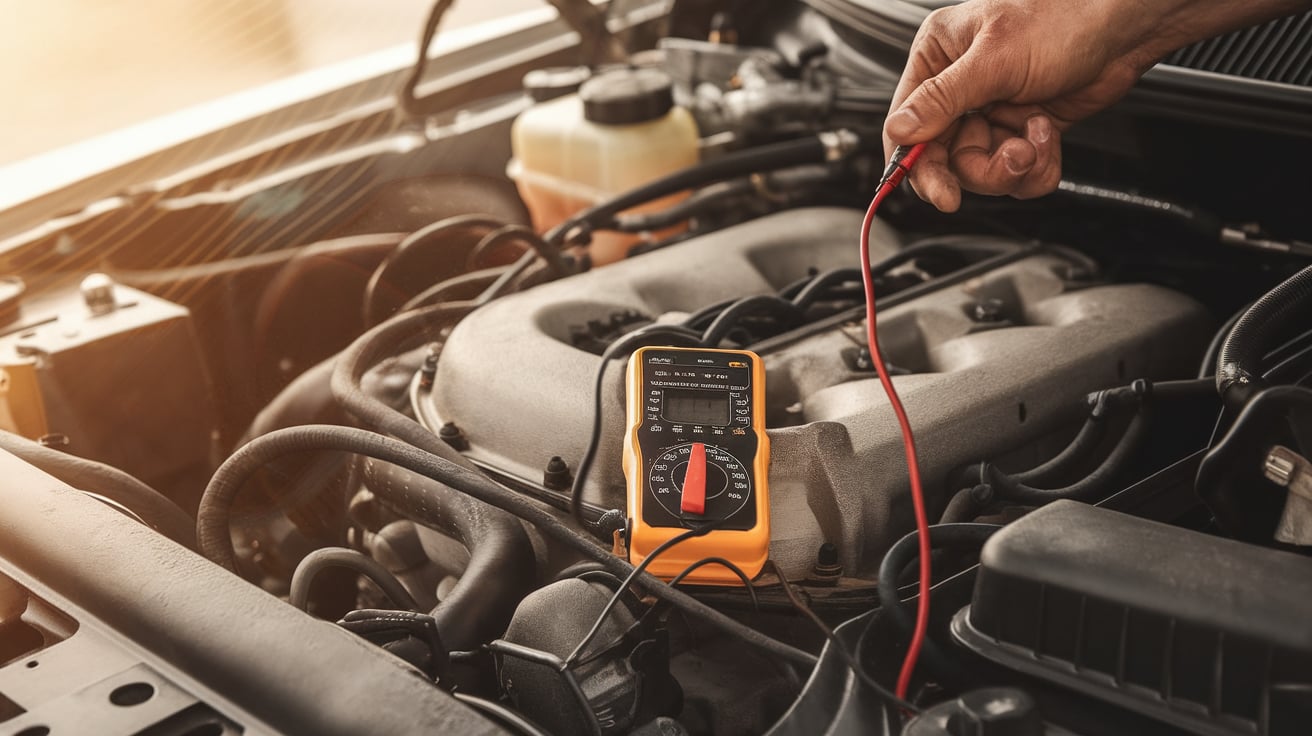
What happens when your radiator fan stops spinning right in the middle of Dubai traffic? Not a pleasant thought, especially with that heat crawling up your dashboard and the engine warning light blinking like a threat. The radiator fan not working is not just a minor glitch,it is a signal your cooling system needs attention. And fast. Because once that engine overheats, the damage begins quietly but climbs quickly. Before it gets worse, there are a few smart, simple things you can check yourself. Let’s walk through them.
Why Your Radiator Fan Is the Real MVP of Your Cooling System
You may not see it working, but when your radiator fan stops, the effects hit hard,especially in a city like Dubai where traffic is slow and heat is constant. The radiator cooling fan does more than just spin. It keeps your engine temperature stable when there’s no natural airflow. Without it, things heat up fast.Here is why the radiator fan matters more than you think:
- Keeps the engine cool in traffic: When your car is idling, the fan pulls air through the radiator, preventing engine overheating.
- Supports your AC system: It helps your air conditioning stay cold by managing condenser heat.
- Works with sensors: The ECU activates the fan when the coolant temperature sensor sends a heat alert.
- Protects your head gasket & engine block: Overheating once or twice can do lasting damage.
So, if your radiator fan is not working, it is not just a small issue,it is a warning sign. And ignoring it? That comes with a cost.

Clear Clues Your Radiator Fan Has Stopped Doing Its Job
When your radiator fan is not working, your car will not hide it for long. It might not shout, but it definitely whispers through rising temps, weak AC, or total silence under the hood. In Dubai’s heat, even a short drive can turn risky fast.Here is how to spot the trouble before it snowballs:
- Engine gets hot when stopped
If the temperature climbs while idling but drops when you drive, the cooling fan isn’t spinning. That’s because airflow stops when your car stops,and without the fan, nothing cools the radiator. - Warm AC at low speeds
Stuck in traffic and the AC blows warm? Could be your radiator fan not cooling the condenser. No airflow means no chill, especially noticeable in slow or parked conditions. - No fan noise, no air movement
When the engine is hot, pop the hood and listen. If you hear nothing and feel no airflow from the radiator shroud, the fan motor or relay might be dead. - Temperature gauge starts climbing
That little dial on your dash is a warning. If it starts moving past halfway, especially in the city, your cooling system is under pressure, and the fan may be to blame. - Overheating warning lights
Newer cars flash a red light or show a warning message. If that happens when you are not even pushing the engine hard, chances are the radiator fan is not switching on.
Tip: Let the engine idle with the AC on for a few minutes. Most electric fans should kick in automatically. If they don’t,you have a problem worth checking.
Small signs now can stop a breakdown later. The fan may be out of sight, but its failure never stays silent for long.
What to Check First When the Radiator Fan Stops Working
A radiator fan not working does not always mean a major failure. Sometimes, it is a simple electrical fault or sensor glitch. You can catch many issues early with a few targeted checks,no guesswork, just smart steps.Here is where to begin before heading to a workshop:
- Start with the radiator fan fuse
Most cars have a separate fan fuse in the engine bay fuse box. If it’s blown, the radiator fan won’t turn on at all. Use a fuse tester or swap with another of the same amperage. If it keeps blowing again, it points to a short circuit in the wiring or a seized fan motor. - Test the radiator fan relay
A cooling fan relay sends power to the fan motor when triggered by the ECU. If this relay fails, even a healthy fan will stay silent. You can try swapping it with a similar relay in the box (like the horn relay) just to check if the fan comes alive. - Inspect the wiring & connectors
In Dubai’s heat, plastic connectors and insulation can crack or melt over time. Look for burnt terminals, broken wires, or corrosion where the fan plugs into the harness. Movement and engine heat make this area prone to wear. - Direct test of the radiator fan motor
Disconnect the fan and apply 12V directly from the battery. If the radiator fan does not spin, the motor is likely dead. Most motors fail gradually, so if it is spinning slower than usual, that’s still a red flag. - Check the coolant temperature sensor
This sensor tells the ECU when to activate the fan. If it’s faulty, the fan will not know when to run. Using a scan tool, you can compare live temperature readings. If the fan never comes on,even when coolant hits 100°C,it may be the sensor or the ECU logic itself.
Idea: On most cars, the radiator fan should start at around 96°C (204°F) and run faster as temps climb. If it does not react at this range, you are chasing a real failure.
Knowing where to look first saves both time and cost. A quiet radiator fan might seem like a small thing,until your engine overheats in the middle of Jumeirah Road.

Radiator Fan Only Kicks In with AC? Here’s What That Really Means
Noticed your radiator fan only works when the AC is on? You are not alone. It might seem strange, but there’s actually logic behind it,and sometimes, a hidden fault too. Let’s break it down the human way, without overcomplicating things.Here’s what could be going on:
- AC overrides normal fan controls
When you turn on the air conditioning, the ECU activates the cooling fan to cool the AC condenser, even if the engine temperature is normal. That part is expected. - Temperature sensor might be off
If the coolant temperature sensor gives false readings, the fan will not switch on when the engine is hot. But the AC circuit bypasses that sensor, which is why the fan still runs with AC. - Faulty fan speed controller
Some vehicles have a fan control module or resistor that adjusts speed. If it is failing, the system may only allow full fan speed,triggered by the AC,not normal cooling mode. - Damaged relay or wiring in cooling circuit
A fan relay connected to the AC circuit might work fine, but the one tied to engine temperature could be damaged or disconnected. That explains why one mode works and the other does not. - Manufacturer logic, not a fault
Some cars are programmed to only run the fan when the AC is active,unless the engine overheats. So if you are not seeing high temps, it may be by design. Still, it is worth double-checking.
Tip: On most vehicles, the radiator fan should engage on its own at around 95–100°C, even without AC. If that does not happen, get it checked,especially in a place like Dubai, where idle heat builds fast.
It might look like a quirk, but it can be a quiet warning. If the fan is skipping its main job and only waking up when the AC is on, it is better to act now than wait for steam under the hood.
Can You Drive Without a Radiator Fan? Here’s What Matters
When the radiator fan is not working, every minute in traffic increases the risk. Before you turn that ignition key, here are six things you need to know:
- Highway Driving Might Be Safe
Fast airflow at higher speeds cools the radiator naturally,but only if you’re not stopping or idling. - City Traffic Heats Things Up Fast
In low-speed or bumper-to-bumper driving, the lack of a cooling fan causes quick temperature spikes. - AC Loads the Cooling System
With air conditioning on, both the engine and condenser need airflow. No fan means faster overheating. - Short Trips Still Carry Risk
Even a 10-minute drive can push the coolant temperature above safe levels in hot weather. - No Warning Until It’s Too Late
Overheating might not show symptoms immediately,until you see steam or feel power loss. - Cost of Delay Is Massive
A faulty radiator fan motor may cost 500–700 AED. Overheating repairs? Easily 5,000+ AED in Dubai.
It only takes one bad traffic jam to push an already hot engine into failure. If your radiator fan isn’t working, skip the risk.

When to Let a Pro Handle Your Radiator Fan Trouble in Dubai
Trying to figure out a radiator fan not working can feel like chasing shadows. One day it’s the fuse, the next it’s something deeper. In Dubai’s heat, there’s no room for trial and error.Let’s look at how a professional technician goes beyond guesswork:
- Reads What Your ECU Isn’t Saying
Scan tools tap into your car’s brain,the ECU,to check if it’s even sending the fan activation signal. If the fan never gets the command, swapping motors won’t help. - Traces the Power Path Properly
A multimeter checks voltage at every point,from relay to ground wire. This finds silent issues like high resistance or half-broken wiring that visual checks miss. - Checks Sensor Response in Real Time
Instead of assuming, they test how the coolant temperature sensor reacts as the engine warms. If it lags or lies, the fan stays off and overheating sneaks in. For a deeper look at how your cooling system connects with the air conditioning setup, explore our detailed guide What Are the Essential Car AC Parts You Should Know?, it shows how your AC condenser and radiator fan work together under Dubai’s extreme heat. - Measures Actual Fan Output
Not all spinning fans do their job. A technician tests airflow pressure and motor speed,because a weak fan can still “run” while failing to cool anything. - Tests the System With AC Load On
In Dubai, a dead fan under AC pressure is a recipe for boiling. That’s why workshops simulate full thermal load,AC on, idle hold, fan delay checks. - Confirms Electrical Logic, Not Just Parts
Sometimes, it’s not the hardware,it’s the signal logic between modules, relays, and sensors. A pro will catch issues a parts-swap can’t solve.
Fact: In 40+°C weather, a misdiagnosed fan issue can raise engine temps 1°C every 10 seconds at idle. That’s damage in minutes.
So if your radiator fan failure keeps coming back,or you are not 100% sure where the fault lies,let a proper diagnostic reveal what your eye can’t. In Dubai, precision matters more than patchwork.
Radiator Fan Repair Costs in Dubai
If your radiator fan is not working, the longer you wait, the more you risk,especially in Dubai’s unforgiving heat. Overheating can happen fast, and what starts as a small fault could end with a breakdown and a big bill. The good news? Most cooling fan issues follow a predictable pattern, and so do the repairs.
| Repair Type | What It Solves | Estimated Cost (AED) |
| Radiator Fan Motor Replacement | Fixes a non-spinning or weak fan motor | 450 – 750 |
| Cooling Fan Relay Replacement | Restores the electrical switch that powers the fan | 80 – 180 |
| Fan Resistor / Control Module | Regulates fan speed in dual-speed or variable systems | 350 – 600 |
| Coolant Temperature Sensor | Sends engine heat data to the ECU | 150 – 300 |
| Radiator Fan Assembly Replacement | Replaces entire unit including motor, blades, shroud | 600 – 1,200 |
| Wiring / Connector Repair | Fixes burnt wires, corroded plugs, or loose terminals | 120 – 400 |
Fact: In Dubai, many fan issues start with heat-exposed wiring or relay damage,not the fan motor itself. Accurate diagnosis saves unnecessary part swaps.
If your radiator fan only works with AC on, or not at all, it is worth handling the root cause early. These price points help you plan ahead and avoid being overcharged. And more importantly, they help you fix the problem before your engine feels the heat. For complete auto care solutions and cooling repairs across Dubai, visit our Dubai car repair experts, where professional diagnostics meet transparent service.

Easy Habits That Prevent Radiator Fan Breakdowns in Dubai
You do not need to be a technician to keep your radiator fan from failing,just a bit of awareness and timely action. In a hot city like Dubai, where the cooling system works overtime, small steps go a long way.Here’s what actually helps:
- Check Fan Wiring for Heat Damage
Wires near the radiator often get brittle from engine heat. Cracked insulation or a burnt connector can kill the fan circuit without warning. - Use Proper High-Temp Coolant
Cheap coolant leads to inaccurate readings from the coolant temperature sensor, which can stop the radiator fan from switching on at the right time. - Avoid Soaking the Engine Bay
Pressure washing under the hood may look clean, but it pushes water into relays, sensors, and fan connectors,leading to corrosion and silent failures. - Watch the Temp Gauge in Traffic
If you notice the engine temperature creeping up while idling with the AC on, it could be an early sign of a weak or non-responsive fan. - Listen for Unusual Fan Sounds
Clicking, buzzing, or no sound at all? That could mean the fan motor is seizing or the blades are jammed. Early signs are usually quiet,until they’re not. - Get a Summer Cooling System Check
Before peak heat hits, ask your garage for a full radiator fan test. Good workshops can simulate heat load, inspect relays, and test motor response. To keep coolant circulation healthy and prevent fan strain, learn more in What is Radiator Flush? Importance & How it Works, it explains why fresh coolant and regular flushing matter for Dubai cars.
Tip: Most electric fans kick in between 95–100°C. If you never hear it run, don’t assume it’s fine,get it tested.
A few small habits now can prevent expensive overheating later. In Dubai, smart drivers stay ahead of the heat,not behind it.
If your radiator fan is not working, don’t wait for warning lights or steam under the hood. It’s one of those parts that stays quiet,until it fails. And when it does, the damage moves fast. Whether it’s a simple fuse or a deeper wiring issue, catching it early can save you thousands in engine repairs, not to mention the stress of being stranded in Dubai’s heat.
At The Mechanic Autos, we take radiator fan issues seriously because we know how harsh local conditions can be on your car’s cooling system. If your fan isn’t spinning, your AC’s gone weak, or that temp needle’s climbing too fast,we’re here to help. Book a full radiator fan diagnostic and cooling system check with us today, and drive with peace of mind tomorrow.
